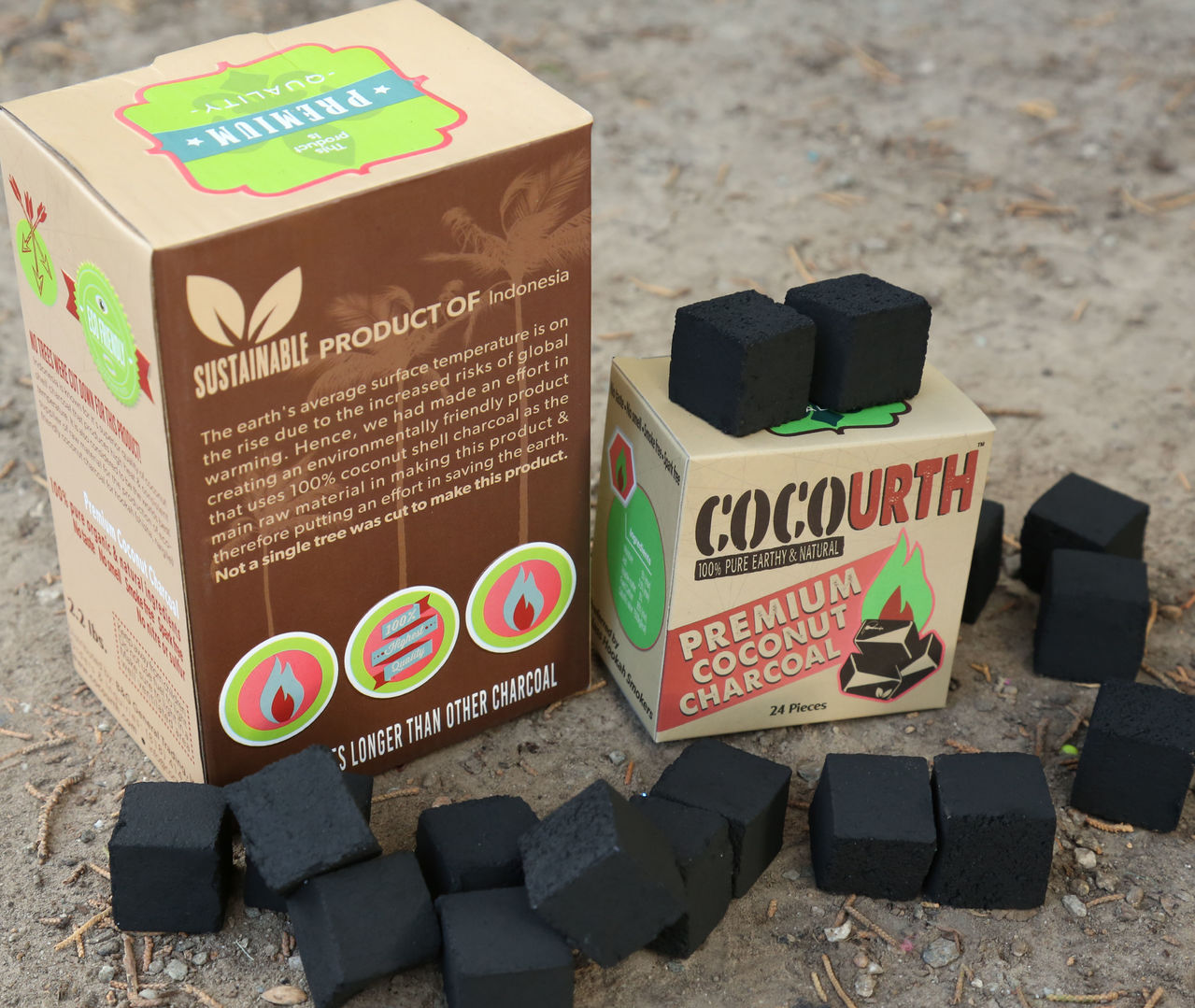So as you can see, the process behind making coals is much more complicated than it seems, and is something that (good) manufacturers take seriously. Hopefully this provided some insight into what makes coals what they are, as well as a small tidbit of info about the process behind them. Cocourth are my personal go-to for coals, as well as being one of the, if not the highest quality coal on the market, and that's why I decided to ask George about this process. As always, thanks for reading, pick up some Cocourth coals, and happy smokes!
Hookah Coals - The Process Behind Them

Welcome back to the weekly B2 blog post. This week, I decided that we should take a look at something that isn't talked about much in the hookah community. Coconut coals. Coals are something that everyone HAS to use to smoke, and the majority of smokers reading this hopefully are using natural coconut coals. That said, what do we know about coals? Aside from coconut, what is in them? What's the process behind making them? There isn't much info about the process out there, so I decided it would be best to ask George Yacoub - the owner and operator for Cocourth, which is objectively one of the best coal manufacturers on the market currently.
Me: So I understand that coals are made of coconut, but what is the process of taking a coconut shell and making it into something that can be burned for a long period of time?
George: The process of making 100% coconut charcoal is a very simple process made with the simplest ingredients. The coconut shell, which is in between the coconut meat and the coconut husk, is easily extracted using a hand tool. The shells are then burned in barrels until they are fully blackened by local farmers. Manufacturers of charcoal briquettes then acquire the burned shells as the main raw material in making the hookah charcoal. After which, the manufacturers will grind the burned shells into very fine granulated powder, mixing it with water and starch to create a doughy textured product. That will then be put into an extruder machine that would mold the charcoal into the shape desired. The last process after cutting the molded charcoal into the desired sizes would be putting the charcoal into an oven at a certain temperature before cooling it to be finally packaged.
Me: What kind of ingredients go into the filler used in coal?
George: The ingredients as explained in the section above, is very basic and simple, water and tapioca (starch extracted from cassava root), that's it.
Me: What is the process that's actually involved to shape coals into cubes/flats?
George: That is taken care by the extruder machine that has a stainless steel mold at the tip of the machine that pushes the charcoal into the desired shape. The cutter at the end of the conveyor belt is what determines the width - whether they are flats or cubes.
Me: What is the difference between a bad coal/good coal/amazing coals? What makes them perform poorly, or break, etc?
George: There are many factors that determine a bad coal from a great coal. It all starts with the raw material. The source where the raw material is purchased from is critical. The soil depending on which island the coconuts are extracted from is crucial as well. From the burning process to the collection of the burned shells all plays a role in how a hookah charcoal would perform, whether it's the dirt that is usually seen mixed with the coals to the ash percentage and color of the coals. The other factors would be the grade of starch that is used to mold the charcoal powder together with the right amount of percentages to create the right mixture. Other than that, it also all comes down to the quality control on removing any bad shaped coals and the time it takes to heat and cool the charcoal. The machines used also have to be top of the line. All these traits put together would determine the performance of the final product.
Me: What caused the major shift in the coal industry to go from quicklite and lemon wood coals to go to coconut coal?
George: The process of making charcoal from wood results in harsh environmental damage, whereas the production of coconut shell charcoal does not require the destruction of any trees. The shift to coconut shell charcoal started with the ban of cutting down trees and when countries began using more eco-friendly practices. Quicklites are chemical infused coals with potassium nitrate that are detrimental for health. This is evident in the way they smell and burn when lighting and in the way the hookah tastes when one take the first drag. It was only a matter of time for the people to realize the difference between the traditional kind of hookah charcoal and the all natural coconut shell charcoal.
